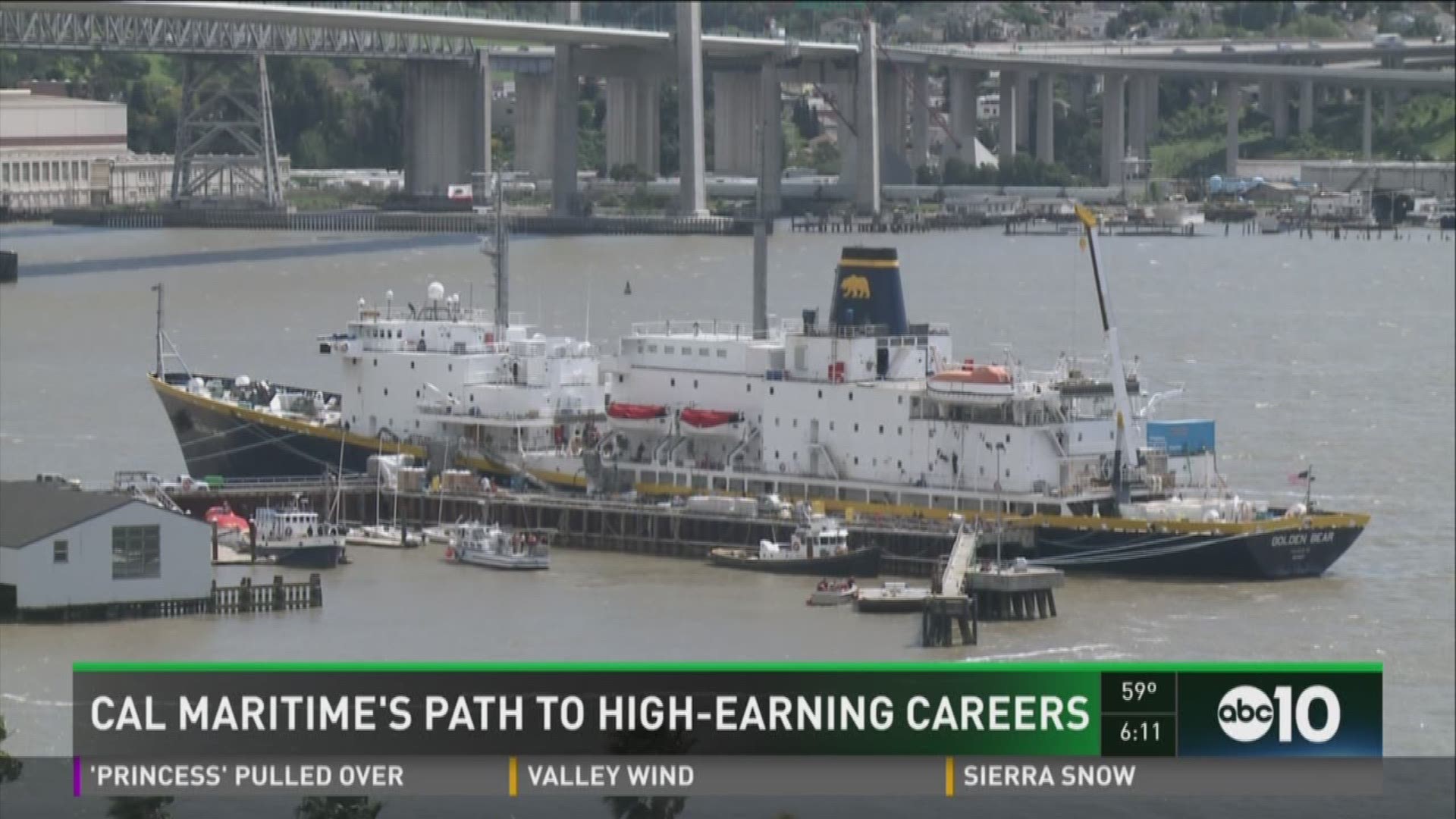The California University where students earn the most 10 years after enrollment isn’t Stanford or Berkeley. It’s actually California State University, Maritime Academy – a relatively little-known school tucked away in Vallejo.
The Georgetown University study ranked CSU Maritime Academy, or Cal Maritime, seventh nationally among 1,400 four-year universities. Cal Maritime students who began college in 2002 had median earnings of $81,000 per year in 2012.
“They come to this school, and they're not just getting a degree. They are part of the CSU system, but our students are also getting a program that develops them academically and prepares them for leadership,” Cal Maritime president Thomas A. Cropper said. “It makes sure they have global competencies, and I think those things put together with the hands-on instruction they get, really prepare them to enter the workforce.”
Graduating seniors Aaron Weissmann and Peter Tong agree.
Both have already secured jobs where they’ll be working as civilians on naval ships – jobs that pay well into the six figures when factoring in overtime. The school says more than 94 percent of its graduates are employed within two months of graduation.
“A lot of people that graduate from here are able to pay their student loans off in a year, Weissmann said. “That’s my plan: To save up, pay my student loans off in a year, and then after that, it's all straight to the bank.”
Tong worked in construction for a year after high school, before enrolling at Cal Maritime.
“I think it means a bit more since I took the year off for work. I know what money's actually worth, and that you work really hard for it,” Tong said. “I'm still going to work hard, but the fact that I was able to get a job that pays that well means a lot. I'll be able to help my siblings pay for college.”
The Cal Maritime experience isn’t for everyone, though.
Students are required to wear uniforms, and often have to work long shifts aboard the Golden Bear, Cal Maritime’s training ship.
Cal Maritime is also a relatively small school, with roughly 300 students in each class.
Cropper says the training prepares students for real life in the maritime industry.
“When they go out to sea, they're spending a lot of time on the ship, and a lot of time at work,” he said. “Unlike other professions, you don't get into your car and leave. The furthest distance you'll be away from work is about 1,000 feet.”
But for the right student – one who thrives in a highly disciplined, scientific environment – the maritime industry can provide an opportunity to see the world.
During his time at Cal Maritime alone, Weissmann has traveled on ships to the U.S. Virgin Islands, Spain, Italy and Japan.
“It's kind of unreal realizing how small you are out there. When you're in a city or a suburban area, everything's going on around you,” Weissman said. “But when you're at sea, you have time to yourself to realize how big the world is and how little you are compared to it.”

